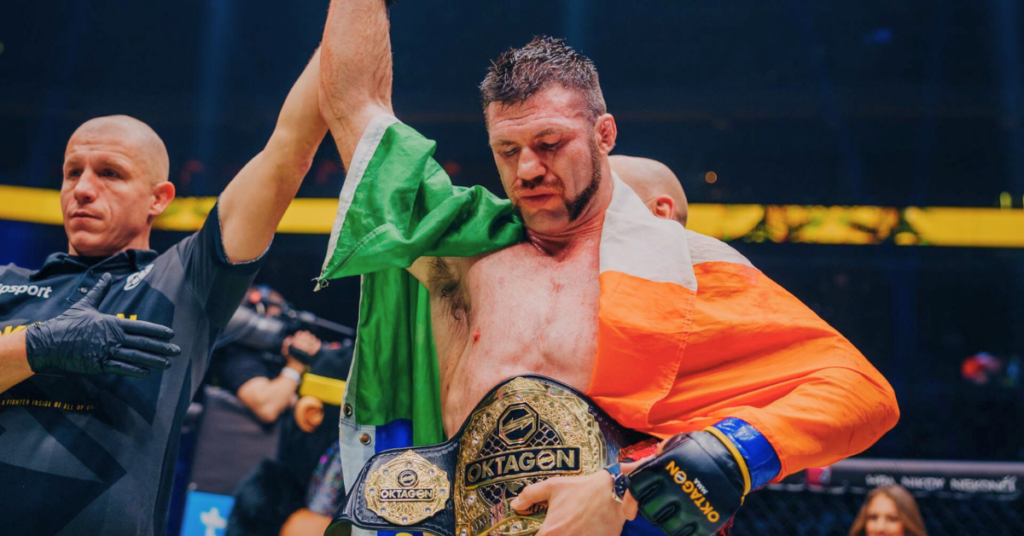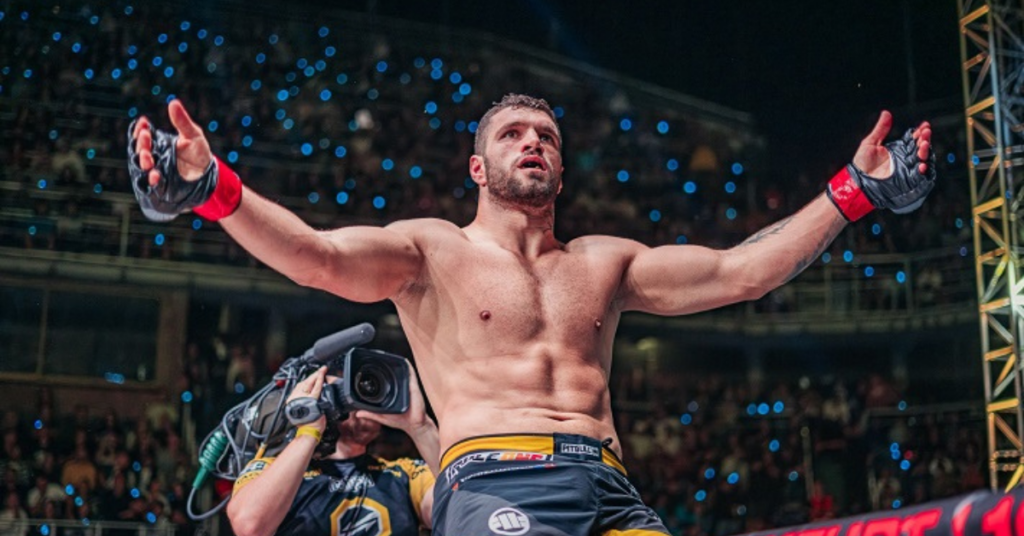History of Muay Thai
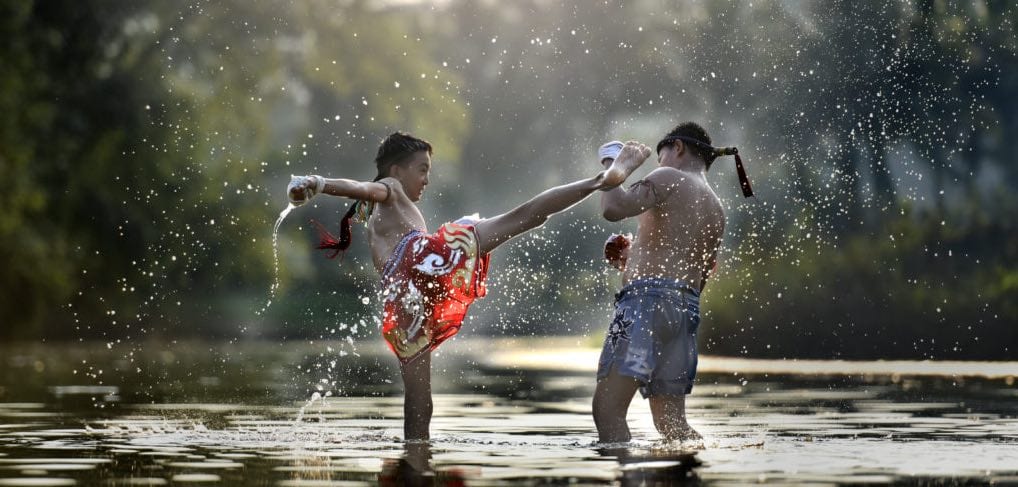
There are fewer sports on the planet with a history and culture as rich and enduring as Muay Thai.
Each and every day, children run the dusty, winding country roads of Thailand with dreams of carrying that culture through to the next generation. To one day join the pantheon of Thailand’s greatest fighters makes their blood, sweat, and tears necessary currency. For these young Nak Muay (Thai boxers), the illustrious Rajadamnern and Lumpinee stadiums – the epicenters of Muay Thai combat – are the promised land.
In any combat sport, hunger is often the difference between failure and success. It is not often meant literally. Like thousands of aspiring fighters living in modest means in the Southeast Asian country, providing their family with a viable way of escaping poverty is the fuel to keep running. It is the reason to return to the gym day after day, taking shot after shot. For many, it is the only way to attain a better life.
These young fighters wrap their hands and stretch their legs, eyes focused and wide. Photos of legendary fighters such as Samart Payakaroon, Dieselnoi Chor Thanasukarn, and Saenchai adorn the walls. The grunts and groans of fighters inside the ropes reverberate around the gym, while the chains holding punch bags rattle and clank. Every Nak Muay started somewhere after all.
The trainers – most of who are revered as leaders in many towns and villages – will tell you that Muay Thai is simply in the blood. Although regarded as Thailand’s national sport, it is more than just competition. It is, for many of the country’s inhabitants, a way of life. The fabric of their people, and a constant reminder of the warrior spirit which runs through each and every Thai’s veins.
Below, we unravel the deep history of Muay Thai, addressing the warriors, kings, facts, and folklore which is embedded in the fabric of this special sport.
The Roots of Muay Thai
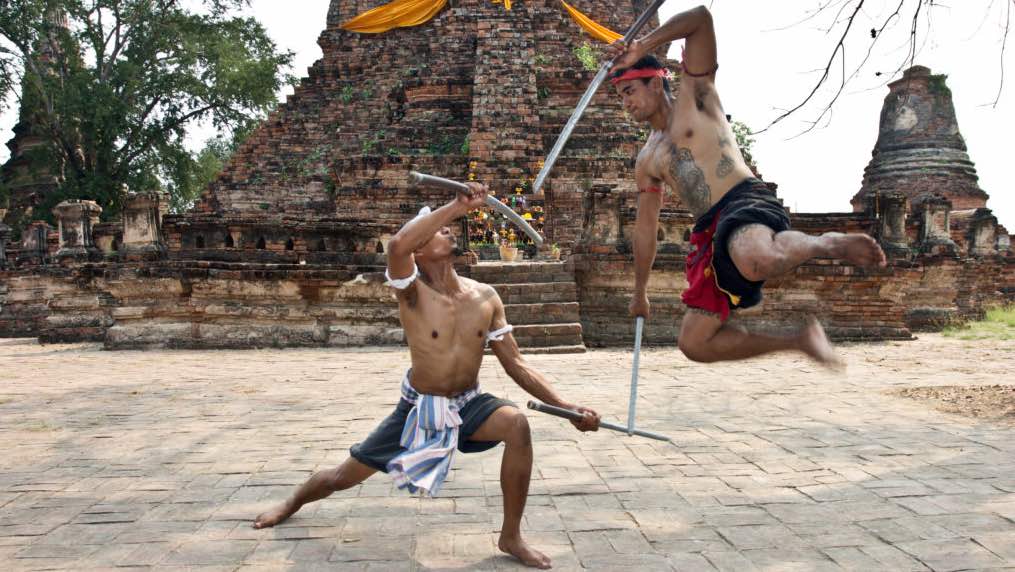
The “Art of the Eight Limbs” which refers to the unarmed combat using fists, elbows, knees, and shins, has an incredible history.
In fact, the origins of Muay Thai extend back hundreds of years in Thailand, which was then called Siam. The style was an adaptation of a branch of military martial arts believed to have derived from warring Chinese armies. The arts were brought throughout Southeast Asia by campaigning tribes. One of those groups, the Tai, were particularly renowned for the prowess of their unarmed combat.
This superior style would soon find its way to Thailand, and other areas in Southeast Asia such as Cambodia, Vietnam, and Laos.
Many Thai tribes had their distinctive brand of these arts. Eventually, they came together from various regions around Siam to share their own nuances which would lead to uniform techniques. These styles – which include Muay Chaiya, Muay Tha Sao, Muay Lopburi, and Muay Korat – are all categorized under the term “Muay Boran,” which means the “ancient arts.” We will explain this in more detail, below.
Even to this day, there are regional fighting styles which are preferred in particular parts of Thailand. Mandatory military service would eventually be a part of Thai lifestyle, which helped to spread the martial art even further.
At times of war, soldiers would sharpen their skills to protect their land from invading countries in the region. The Thais would engage in numerous battles against Burma, for example, who – in knowing the importance of the Thai fighting style to its people – destroyed every record or teaching they could. In times of peace, fighters would engage in exhibitions in towns and villages, often as a celebration of the country’s heritage.
The best fighters from each region would then be pitted against one another, fighting for the title as the most feared fighter in the country. Young soldiers, veteran fighters, and many upstarts all battled for supremacy and local celebrity. More than anything, these fighters wanted to be known as the true defenders of the country, its people, and the principles it stood for.
The Destruction of Muay Thai Records
There is an absence of records predating one particular invasion by nearby Burma (present-day Myanmar). The invading forces destroyed a number of records which documented the origins of the martial art, which has led to an unfortunate gap in the history of Muay Thai’s beginnings.
These records and teachings were held in temples and other areas in Ayudhaya – which served as Siam’s capital – in the 14th century. The Burmese forces aimed to destroy the military and combat knowledge which was sacred to the Thais at the time. Almost all known written history was burnt and destroyed, with a minor amount of information preserved. This remaining knowledge has helped us piece together what we know today.
What was left was passed down to subsequent generations. It taught how Muay Thai was a supreme form of combat where practitioners could use their bodies as weapons in themselves.
The fists would represent daggers and swords, while the shins and forearms would act as shields. The elbows would be used like heavy hammers, with knees as destructive as tempered axes. The head was also used, although modern Muay Thai would eventually prohibit its use.
Legends of Muay Thai
Unlike other martial arts or sports around the world, Muay Thai is also steeped in legends, myths, and fantastic tales. Among the stories of ghosts, magical powers, and evil spirits, many regale in the stories of fearless warriors and soldiers blessed with superhuman fighting skills.
Thai culture is awash with such folklore. It has become engrained in the fabric of Thailand’s national sport as a result.
King Naresuan
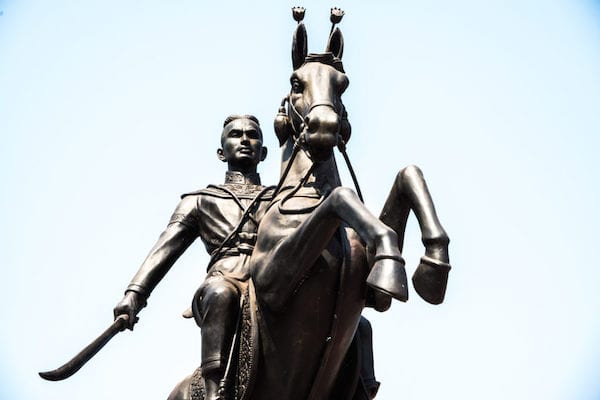
One of these stories pertains to King Naresuan, one of the most important figures in Thai history. The monarch is renowned for his numerous battles against the invading Burmese forces and relentless dedication to the Thai people.
As the story goes, the king was captured in 1560 by the Burmese following the destruction of Siam. The Burmese royals, who had heard of the Naresuan’s fighting prowess, promised him freedom if he could beat Burma’s finest fighters. According to the legend, Naresuan obliterated everyone pitted against him, which led to his freedom and his place at the forefront of future battles against the Burmese and other invaders.
Nai Khanom Tom
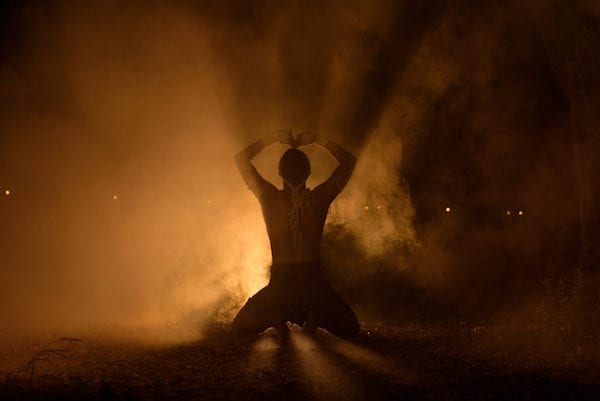
Nai Khanom Tom – known as the “Father of Muay Thai” – is another hugely popular legend of the sport. His rise to prominence came when Ayudhaya was sacked by (yes, you guessed it) those dreaded Burmese again. Some of the most important aspects of Thai culture were destroyed in the raids, with anything of value taken by the Burmese. Among the treasures taken back to Burma was Nai Khanom Tom.
He would be held there for seven years.
When troops arrived back in Burma following a subsequent war, the king demanded entertainment to mark the victory over the Thais. Predictably enough, the monarch ordered the Thai fighter to go up against the best Burma had to offer. Nai Khanom would eventually be called into the arena and began to move around his opponents, gesturing to the royals, the spectators, and the fighters nearby in a spiritual fashion.
While everyone watching assumed that the Thai was casting a spell – or invoking a spiritual attack – Nai Khanom explained his actions. He was affording respect and gratuity to his people, his king, and his ancestors in a ritualistic dance. This dance – which is known as the “Wai Kroo” – is performed by combatants prior to a Muay Thai bout to this day.
Following the dance, Nai Khanom went through his first opponent with ease, brutalizing him with a series of strikes. His opponent protested, arguing that the slave inflicted a curse upon him, using magic to beat him. The victory was not a one-off, as the Thai would go on to destroy another ten soldiers with his ethereal technique and brutal knees, elbows, kicks, clinches, and throws.
The Burmese king was so impressed with what he saw, that – not only did he grant Nai Khanom his freedom – but also provided a number of Burmese women to him as a gift. The Thai returned to his homeland as a legend and would teach Muay Thai for the rest of his life, celebrated as a hero of his homeland.
“The French Brothers”
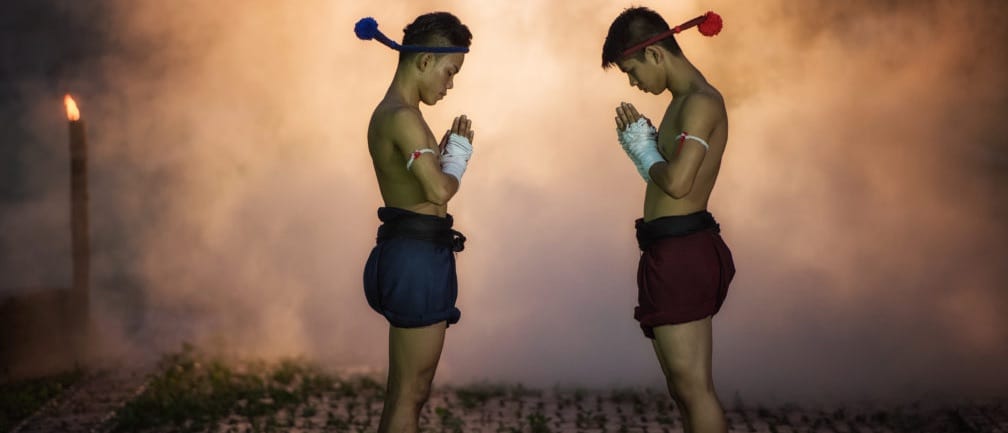
Another very popular Muay Thai legend dates back to the reign of Rama I in 1788. As the story goes, two French brothers were embarking on a tour of Southeast Asia. They eventually made it to Thailand and announced they were students of combat aiming to disprove the potency of different fighting styles in the region. Their brash and arrogant demeanor did not go down well among locals.
When the brothers requested to fight the best combatant – via the king – they were matched up with the captain of the palace guard. The Frenchmen had bragged of their success in defeating feared fighters in the countries they had traveled through and put a huge wager down that they could also beat the Thai. To the local Thais, the fight was for the honor of the king and country, not just money.
One of the French brothers was matched up against the guard. He was surprised at the deftness of the Thai’s attacks and was picked apart with teeps (front kicks) and leg kicks. Unable to land a single shot, the other brother – now a spectator – grabbed the Thai and pushed him into his sibling’s reach. This cheating did not go down well with the Thais, who felt the act was a great dishonor to Muay Thai customs.
The Frenchmen were restrained and held down to the point of exhaustion. Following their cowardly acts, they would leave Thailand the next day with their egos bruised and in shame.
Muay Boran
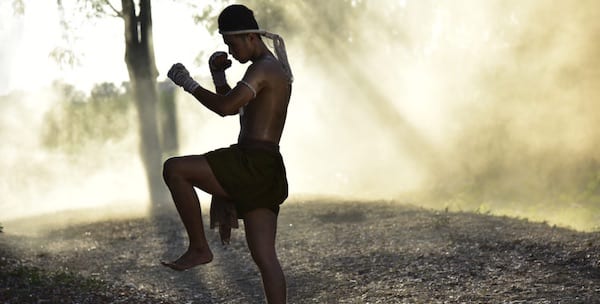
Before Muay Thai was widely used, Muay Boran was the term which fighters used to describe their style until strict rules were established in the 1930’s. Aside from the introduction of a ring in favor of a traditional fighting circle, a referee, rounds, and gloves instead of rope wrapped around the hands, the use of headbutts was also banned.
As we mentioned above, the term Muay Boran actually encompasses a number of different styles under the “ancient boxing” banner. What all these styles have in common is that the spiritual connection and warrior mindset are deeply entrenched in each. While Muay Thai – with its western-boxing style ring, rounds, and spectator-friendly setup – would grow massively, the styles below are also extremely important to Thais.
Muay Thasao – This is the style of fighting which is more commonly associated with the northern regions of Thailand.
Known as “Monkey Feet Boxing,” Muay Thasao is regarded as the one style which best represents the beauty of the art. In Muay Thai, there are different styles of fighters. The more cerebral and technically-gifted practitioners generally fight in the Muay Femur (technician) style, which many believe originated in north Thailand.
Muay Chaiya – Southern Thailand’s fighting style, Muay Chaiya, emphasizes the infliction of severe damage as the most important quality of fighting.
The Muay Khao (knee fighter) style of Muay Thai is believed to directly related to this discipline. Heavy knees and brutal elbows, with a strict focus on good defense and posture, are the main markers of Muay Chaiya.
Muay Lopburi – The style of central Thailand, Muay Lopburi is renowned for being heavily based on punches.
You can expect to see the greatest punching elements of Muay Thai – especially the smart boxing style – heavily attributed to Muay Lopburi.
Muay Korat – Northeast Thailand is famous for its Muay Korat style.
Like Muay Lopburi, Muay Korat is also based on power and strength. Practitioners of Muay Thai will be aware of the “Buffalo Punch,” which comes from Muay Korat. With a Muay Korat fighting style, hard and heavy shots are particularly approved.
Modernizing Muay Thai
When you understand the rich history of the “Art of the Eight Limbs,” it can be an incredible experience walking into a gym in Thailand.
Watching kids sparring can really hit home just how important the ancient art is to the Thai people. When we attend a fight in the Lumpinee or Rajadamnern Stadiums, we are witnessing battles in the modern spiritual homes of Muay Thai. The culmination of the centuries of warfare, combat, and technical evolution play out in front of our eyes.
However, it wasn’t until the modernization of Muay Thai that this was made possible for western observers, or anyone outside of Thailand. While western tourists had been traveling to Thailand – and expressing a great interest in the sport – for a considerable amount of time, it appeared too exotic and brutal to be considered a sport. Popularly known as “Siam Boxing,” the sport underwent a significant change and prospered.
Muay Thai Codes, Rules, and Ethics
Understanding that there was potential for Muay Thai to prosper across the globe, King Rama VII demanded the sport be centralized.
In 1921, a boxing ring – the same as used in western boxing matches – appeared in Suan Kularp. The idea was that this would make the sport appear as civilized as boxing, which would help it grow in other countries. This was not the only change. Boxing gloves were also introduced in favor of hemp rope or the horsehide which fighters typically used to protect their knuckles.
Referees were introduced to preside over fights, which were now fought in increments of five rounds per bout. Battles would be timed and fighters at major arenas – such as the Lumpinee – would wear protection on their groins. Fights were now almost exclusively referred to as Muay Thai bouts, which distanced the practice as a sport from the ancient arts of Muay Boran.
WMC, MMA, and Increasing Popularity
Post-war, the sport thrived and continued to enjoy increasing popularity in Thailand and beyond. The “Golden Age” of the sport in the 1980’s and 1990’s synchronized with another massive leap for Muay Thai. In the early to mid-90’s, the International Federation of Muaythai Amateur (IFMA) was established to govern the sport. Thailand’s government also created the World Muaythai Council (WMC) in 1995.
Over the years, the sport has become one of the foremost of the striking arts due to this mass global appeal. From the mid-90’s onwards, Muay Thai became one of the fundamental components of mixed martial arts (MMA), and, is considered as the most important striking art in the sport.
Fighters such as Anderson Silva, Wanderlei Silva, Jose Aldo, Joanna Jedrzejczyk, Cris Cyborg helped take the sport to a wider audience via the UFC, Dream, Strikeforce and other promotions. These days, it is common to see techniques such as the clinch, the low kick, teeps, elbows, flying knees, roundhouse kicks and more.
There is little doubt that Muay Thai has come very far from its origins as a means of self-defense. The greatest part is that it has so much more to give the world and the ever-growing number of practitioners across the globe.


